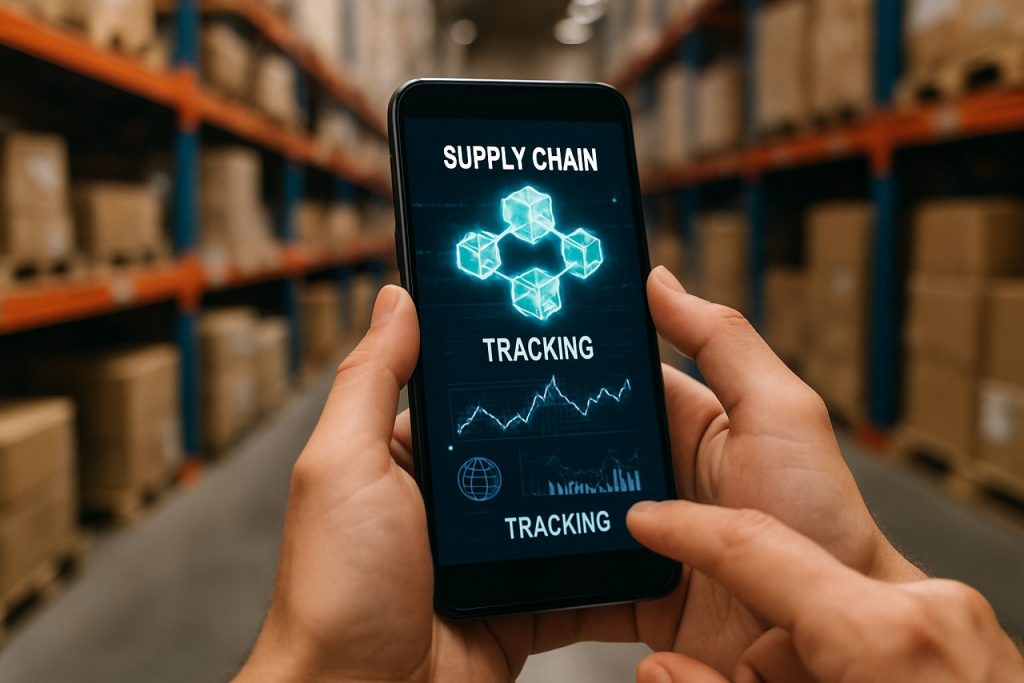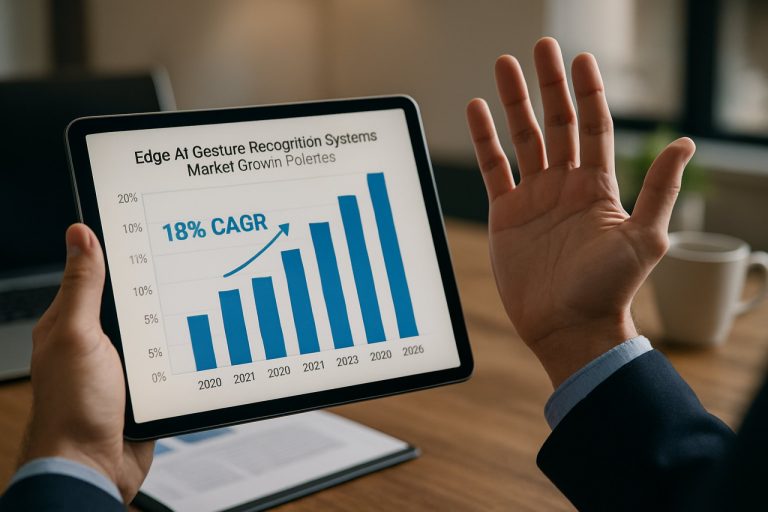
Blockchain-Enabled Supply Chain Tracking Market Report 2025: In-Depth Analysis of Growth Drivers, Technology Trends, and Global Forecasts. Discover How Blockchain is Transforming Supply Chain Transparency and Efficiency.
- Executive Summary & Market Overview
- Key Technology Trends in Blockchain-Enabled Supply Chain Tracking
- Competitive Landscape and Leading Solution Providers
- Market Growth Forecasts 2025–2030: CAGR, Revenue Projections, and Adoption Rates
- Regional Analysis: North America, Europe, Asia-Pacific, and Rest of World
- Challenges, Risks, and Opportunities in Blockchain Supply Chain Adoption
- Future Outlook: Strategic Recommendations and Emerging Use Cases
- Sources & References
Executive Summary & Market Overview
Blockchain-enabled supply chain tracking refers to the application of distributed ledger technology to enhance transparency, traceability, and efficiency across supply chain networks. By leveraging blockchain’s immutable and decentralized nature, organizations can record every transaction and movement of goods in real time, creating a tamper-proof audit trail from origin to end consumer. This technology addresses longstanding challenges such as counterfeiting, fraud, and lack of visibility, which are prevalent in complex, globalized supply chains.
As of 2025, the market for blockchain-enabled supply chain tracking is experiencing robust growth, driven by increasing regulatory requirements, consumer demand for transparency, and the need for operational resilience. According to Gartner, global spending on blockchain solutions is projected to reach $19 billion in 2025, with supply chain applications representing a significant share of this investment. Key industries adopting blockchain for supply chain tracking include pharmaceuticals, food and beverage, automotive, and luxury goods, where provenance and authenticity are critical.
- Pharmaceuticals: The Drug Supply Chain Security Act (DSCSA) in the United States and similar regulations worldwide are accelerating blockchain adoption to ensure drug traceability and combat counterfeit medicines. Companies like IBM and PwC are leading solution providers in this space.
- Food & Beverage: High-profile food safety incidents have prompted major retailers and producers to implement blockchain-based tracking. Walmart and Carrefour have deployed blockchain to trace produce from farm to shelf, reducing recall times and increasing consumer trust.
- Automotive & Luxury Goods: Blockchain is used to verify the authenticity of parts and products, helping brands like Mercedes-Benz and LVMH combat counterfeiting and ensure ethical sourcing.
Despite its promise, the market faces challenges such as integration with legacy systems, scalability, and the need for industry-wide standards. However, ongoing collaboration among technology providers, industry consortia, and regulators is expected to drive further adoption and innovation. As blockchain matures, its role in supply chain tracking is poised to become a cornerstone of digital transformation strategies worldwide.
Key Technology Trends in Blockchain-Enabled Supply Chain Tracking
Blockchain-enabled supply chain tracking is rapidly transforming how goods are monitored, authenticated, and managed across global networks. As of 2025, several key technology trends are shaping the adoption and evolution of blockchain in supply chain management, driven by the need for transparency, efficiency, and resilience in increasingly complex supply chains.
- Integration with IoT and Edge Devices: The convergence of blockchain with Internet of Things (IoT) sensors and edge computing is enabling real-time, tamper-proof data capture at every stage of the supply chain. This integration allows for automated recording of temperature, location, and handling conditions, which are immutably stored on blockchain ledgers. Companies like IBM are leading initiatives that combine IoT and blockchain to enhance traceability and reduce manual intervention.
- Interoperability and Consortium Blockchains: In 2025, there is a marked shift toward interoperable blockchain platforms and industry consortia. Solutions such as Hyperledger and R3 Corda are facilitating data sharing across different organizations and platforms, breaking down silos and enabling end-to-end visibility. This trend is critical for industries like pharmaceuticals and food, where cross-border compliance and multi-party collaboration are essential.
- Smart Contracts for Automated Compliance: The use of smart contracts—self-executing agreements coded on the blockchain—is automating compliance checks, payments, and dispute resolution. This reduces administrative overhead and accelerates transaction settlements. According to Gartner, by 2025, over 30% of supply chain transactions in leading industries will be governed by smart contracts.
- Focus on Sustainability and Ethical Sourcing: Blockchain is increasingly used to verify the provenance of raw materials and finished goods, supporting sustainability and ethical sourcing initiatives. Platforms like Everledger are providing immutable records of origin for diamonds, minerals, and agricultural products, helping companies meet regulatory requirements and consumer demand for transparency.
- Scalability and Energy Efficiency Improvements: Advances in consensus mechanisms, such as Proof of Stake (PoS) and Layer 2 solutions, are addressing previous concerns about blockchain scalability and energy consumption. These improvements are making blockchain more viable for high-volume, global supply chains, as highlighted in recent research by Deloitte.
These technology trends are collectively driving the mainstream adoption of blockchain-enabled supply chain tracking, promising greater transparency, efficiency, and trust across industries in 2025 and beyond.
Competitive Landscape and Leading Solution Providers
The competitive landscape for blockchain-enabled supply chain tracking in 2025 is characterized by rapid innovation, strategic partnerships, and increasing adoption across industries such as pharmaceuticals, food and beverage, automotive, and luxury goods. The market is witnessing the entry of both established technology giants and specialized blockchain startups, each vying to address the growing demand for transparency, traceability, and efficiency in global supply chains.
Leading solution providers include IBM, whose IBM Blockchain Transparent Supply platform is widely adopted by enterprises seeking end-to-end visibility and real-time data sharing. Oracle offers its Blockchain Platform Cloud Service, enabling integration with existing enterprise resource planning (ERP) systems and supporting multi-party workflows. SAP leverages its SAP Leonardo Blockchain capabilities to enhance its supply chain management suite, focusing on interoperability and scalability for large organizations.
Among specialized providers, Everledger stands out for its focus on provenance tracking in the diamond, wine, and luxury goods sectors, using blockchain to combat counterfeiting and ensure ethical sourcing. VeChain has established a strong presence in Asia and Europe, offering blockchain-based solutions for food safety, automotive parts, and pharmaceuticals, with a focus on IoT integration and data immutability. Ambrosus targets the food and pharmaceutical industries, providing sensor-driven blockchain tracking to monitor quality and compliance throughout the supply chain.
Consortium-led initiatives are also shaping the competitive landscape. The TradeLens platform, developed by IBM and Maersk, has gained traction in global shipping, enabling secure document exchange and real-time cargo tracking. The IBM Food Trust network brings together retailers, growers, and suppliers to enhance food safety and recall efficiency using blockchain.
- Key competitive factors include interoperability with legacy systems, scalability, regulatory compliance, and the ability to support multi-stakeholder ecosystems.
- Strategic partnerships between technology providers, logistics firms, and industry consortia are accelerating solution deployment and standardization.
- Market leaders are investing in AI and IoT integration to enhance data accuracy and automate supply chain processes.
As blockchain-enabled supply chain tracking matures, the market is expected to consolidate around platforms that offer robust security, seamless integration, and demonstrable ROI, with leading providers setting the pace for innovation and adoption in 2025.
Market Growth Forecasts 2025–2030: CAGR, Revenue Projections, and Adoption Rates
The market for blockchain-enabled supply chain tracking is poised for robust growth between 2025 and 2030, driven by increasing demand for transparency, traceability, and efficiency across global supply chains. According to projections by Gartner, enterprise blockchain spending is expected to reach $19 billion by 2028, with supply chain applications representing a significant share of this investment. Specifically, the blockchain supply chain market is forecasted to grow at a compound annual growth rate (CAGR) of approximately 48% from 2025 to 2030, as reported by MarketsandMarkets.
Revenue projections indicate that the global blockchain supply chain market will surpass $14 billion by 2030, up from an estimated $2.5 billion in 2025. This surge is attributed to accelerated adoption in sectors such as food and beverage, pharmaceuticals, automotive, and retail, where regulatory compliance and consumer demand for provenance are critical drivers. IDC highlights that by 2027, over 30% of large manufacturers will have integrated blockchain-based tracking solutions into their core supply chain operations, up from less than 10% in 2024.
- Adoption Rates: Adoption is expected to be highest in North America and Europe, where regulatory frameworks and digital infrastructure are more mature. Asia-Pacific is projected to experience the fastest growth, with adoption rates climbing as governments and enterprises invest in digital transformation initiatives.
- Key Drivers: The main factors fueling this growth include the need for real-time visibility, fraud reduction, compliance with evolving regulations (such as the EU’s Digital Product Passport), and the increasing complexity of global supply chains.
- Sectoral Trends: The food and pharmaceutical industries are anticipated to lead adoption due to stringent safety and traceability requirements. Automotive and electronics sectors are also ramping up investments to combat counterfeiting and ensure ethical sourcing.
In summary, the period from 2025 to 2030 will see blockchain-enabled supply chain tracking transition from pilot projects to mainstream deployment, with high double-digit CAGR, multi-billion-dollar revenue potential, and rapidly rising adoption rates across key industries and regions.
Regional Analysis: North America, Europe, Asia-Pacific, and Rest of World
The regional landscape for blockchain-enabled supply chain tracking in 2025 is marked by varying adoption rates, regulatory environments, and industry priorities across North America, Europe, Asia-Pacific, and the Rest of the World (RoW).
- North America: North America remains at the forefront of blockchain adoption in supply chain tracking, driven by robust investments from major logistics, retail, and food companies. The United States, in particular, benefits from a mature technology ecosystem and supportive regulatory frameworks. Key players such as IBM and Walmart have piloted and scaled blockchain solutions for end-to-end traceability, food safety, and anti-counterfeiting. According to Gartner, over 30% of large North American enterprises in the food and pharmaceutical sectors are expected to implement blockchain-based tracking by 2025.
- Europe: Europe’s adoption is propelled by stringent regulatory requirements, particularly around food safety, sustainability, and anti-fraud measures. The European Union’s digital strategy and initiatives such as the European Blockchain Services Infrastructure (EBSI) foster cross-border interoperability. Companies like Maersk and Carrefour are leveraging blockchain to enhance transparency and compliance. The European Commission projects that blockchain-enabled supply chain solutions will be integral to meeting the EU’s Green Deal objectives by 2025.
- Asia-Pacific: The Asia-Pacific region is experiencing rapid growth, fueled by manufacturing hubs in China, Japan, and South Korea, and a surge in e-commerce. Governments are actively supporting blockchain pilots to combat counterfeiting and improve export traceability. For instance, Alibaba and JD.com have deployed blockchain for food and luxury goods tracking. According to IDC, Asia-Pacific will account for the fastest CAGR in blockchain supply chain investments through 2025, with China leading in both pilot projects and commercial deployments.
- Rest of World (RoW): Adoption in Latin America, the Middle East, and Africa is nascent but growing, often driven by the need to address supply chain inefficiencies and fraud. Initiatives in agriculture and mining are prominent, with organizations like the World Bank supporting pilot projects in traceability and fair trade. However, challenges such as limited digital infrastructure and regulatory uncertainty persist, potentially slowing widespread adoption in the near term.
Overall, while North America and Europe lead in regulatory-driven and enterprise-scale adoption, Asia-Pacific is emerging as a dynamic growth engine, and RoW regions are exploring targeted use cases to address local challenges in 2025.
Challenges, Risks, and Opportunities in Blockchain Supply Chain Adoption
Blockchain-enabled supply chain tracking is poised to transform global logistics by providing immutable, transparent, and real-time records of goods as they move through complex networks. However, the adoption of this technology in 2025 faces a nuanced landscape of challenges, risks, and opportunities.
Challenges and Risks
- Integration Complexity: Many supply chains rely on legacy systems that are not readily compatible with blockchain platforms. Integrating distributed ledger technology with existing enterprise resource planning (ERP) and warehouse management systems requires significant investment and technical expertise, which can be a barrier for small and medium-sized enterprises (Gartner).
- Data Standardization: The lack of standardized data formats and protocols across industries complicates the seamless sharing of information on a blockchain. Without industry-wide consensus, interoperability remains limited, reducing the potential benefits of end-to-end visibility (Deloitte).
- Scalability and Performance: As supply chains generate vast amounts of data, blockchain networks must handle high transaction volumes without compromising speed or incurring excessive costs. Current public blockchains often struggle with throughput and latency, which can hinder real-time tracking (IBM).
- Regulatory Uncertainty: Evolving regulations around data privacy, digital identity, and cross-border data flows introduce compliance risks. Companies must navigate a patchwork of legal frameworks, especially when operating in multiple jurisdictions (PwC).
Opportunities
- Enhanced Traceability: Blockchain’s immutable ledger enables precise tracking of products from origin to destination, reducing fraud, counterfeiting, and theft. This is particularly valuable in industries such as pharmaceuticals, food, and luxury goods (GS1).
- Operational Efficiency: Automated smart contracts can streamline processes such as payments, customs clearance, and inventory management, reducing administrative overhead and human error (Accenture).
- Consumer Trust and Sustainability: Transparent supply chain data allows companies to substantiate sustainability claims and ethical sourcing, meeting growing consumer and regulatory demands for responsible business practices (World Economic Forum).
In 2025, the successful adoption of blockchain-enabled supply chain tracking will depend on overcoming integration and standardization hurdles, while leveraging the technology’s unique capabilities to drive transparency, efficiency, and trust across global value chains.
Future Outlook: Strategic Recommendations and Emerging Use Cases
Looking ahead to 2025, blockchain-enabled supply chain tracking is poised for accelerated adoption, driven by increasing regulatory demands, consumer expectations for transparency, and the need for operational resilience. Strategic recommendations for stakeholders center on interoperability, ecosystem collaboration, and targeted investment in scalable solutions.
First, interoperability will be critical. As multiple blockchain platforms emerge, supply chain participants should prioritize solutions that support cross-chain data exchange and integration with legacy systems. Industry consortia, such as the IBM Blockchain Supply Chain network and the Hyperledger Foundation, are advancing standards to facilitate seamless data flow across diverse networks, reducing silos and enhancing end-to-end visibility.
Second, ecosystem collaboration is essential. Companies should engage in multi-stakeholder initiatives, including suppliers, logistics providers, regulators, and technology vendors, to co-develop governance frameworks and data-sharing protocols. The GS1 Blockchain Standards and the World Trade Organization’s blockchain pilots exemplify efforts to harmonize data standards and regulatory compliance across borders.
Third, investment should focus on scalable, modular blockchain solutions that can be tailored to specific supply chain segments. For example, the food and pharmaceutical industries are leading adopters, leveraging blockchain for provenance tracking and anti-counterfeiting. The U.S. FDA’s food traceability pilots and Pfizer’s blockchain initiatives in pharmaceutical supply chains highlight the value of immutable records for safety and compliance.
Emerging use cases in 2025 are expected to expand beyond traceability. These include automated compliance reporting, real-time carbon footprint tracking, and dynamic risk management. For instance, blockchain-enabled platforms are being piloted to automate ESG (Environmental, Social, and Governance) disclosures, as seen in projects by Maersk and Walmart. Additionally, integration with IoT devices is enabling real-time monitoring of shipment conditions, further enhancing transparency and trust.
In summary, the future outlook for blockchain-enabled supply chain tracking in 2025 is robust, with strategic focus on interoperability, collaboration, and scalable innovation. Early movers who invest in these areas are likely to gain competitive advantage through improved efficiency, compliance, and stakeholder trust.
Sources & References
- IBM
- PwC
- Walmart
- LVMH
- Hyperledger
- Deloitte
- Oracle
- VeChain
- Ambrosus
- TradeLens
- Maersk
- MarketsandMarkets
- IDC
- European Commission
- Alibaba
- JD.com
- World Bank
- GS1
- Accenture
- World Trade Organization’s blockchain pilots



